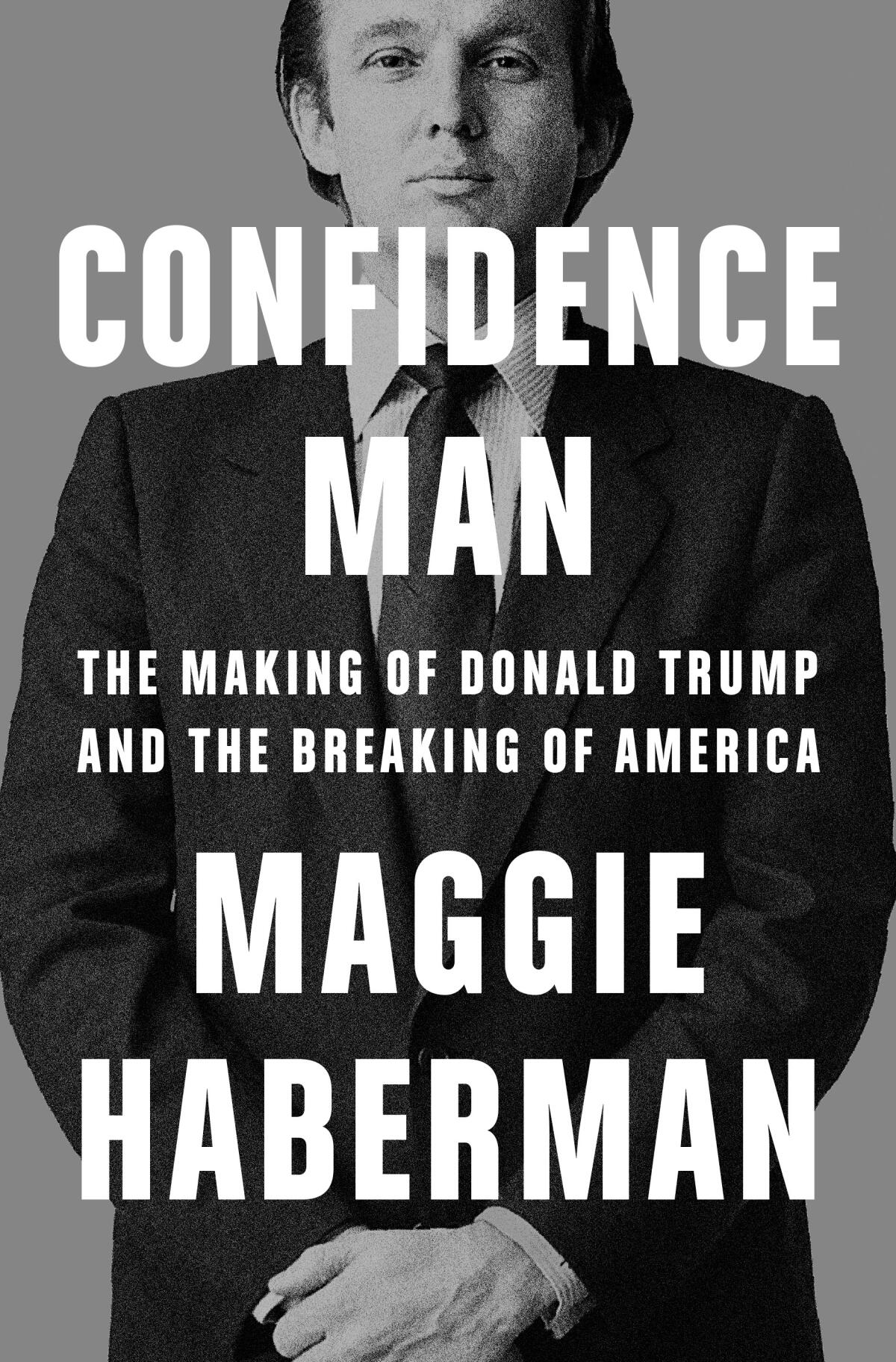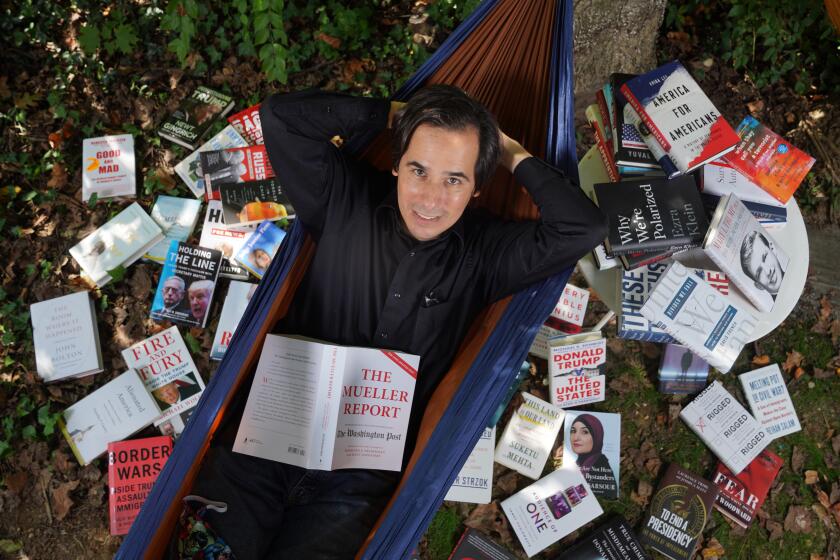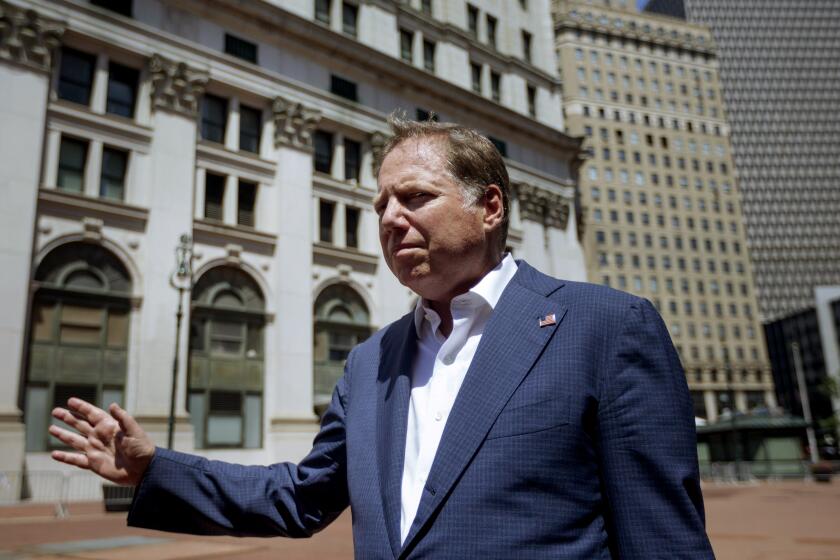Review: Yes, we already know who Trump is. Here’s why Maggie Haberman’s book still matters

On the Shelf
Confidence Man: The Making of Donald Trump and the Breaking of America
By Maggie Haberman
Penguin: 608 pages, $32
If you buy books linked on our site, The Times may earn a commission from Bookshop.org, whose fees support independent bookstores.
Yes, he made jokes about “how much longer” the ailing Ruth Bader Ginsburg could hang on against imminent death. No, he apparently was not pleased about sitting on the White House toilet seat that Barack Obama had once used. Yes, he claimed against all evidence that, against all personal inclination, he didn’t watch the January 2021 riots unfold at the U.S. Capitol. Yes, he thought it was unlikely that his son-in-law Jared Kushner “and his skinny ass” would be comfortable on a camping expedition.
All that — and much more — already has leaked out of “Confidence Man,” Maggie Haberman’s monumental look at Donald Trump and his presidency. Much of it has leaked into our consciousness of the madness and chaos inherent to the Trump administration. Some of it has already leached into our memories from the thousands of tweets, the hundreds of leaks from other Trump books, the scores of legal challenges. Not to mention the single searing memory of the afternoon when Vice President Mike Pence declined to throw the election to his boss.
In the heyday of the newsmagazines, Time and Newsweek reporters derided exactly the sort of lurid tidbits assembled in this season’s Trump retrospectives as “nuts on the fruitcake.” And then, each week, the magazines’ correspondents stumbled over each other to harvest those pecans, almonds and, in the case of the Clinton administration, the macadamias that the 42nd president employed as sex aids. Haberman’s collection is big enough to fill a container of salted mixed nuts from Costco. Here’s a sampler:
How Trump wondered (aloud, of course) whether Kushner used the prohibition on working on the Jewish sabbath as a way of papering over his laziness. How 45 trumpeted that he had no intention of leaving the White House, maybe never. How he thought he should emerge in a wheelchair from Walter Reed National Military Medical Center after being treated for COVID-19, stand up, rip apart his buttons and reveal a Superman shirt. How (this one we know, but now it’s double-confirmed) he demanded during White House functions that he get more ice cream than anyone else. Some of the details are utterly cringeworthy and, alas, unworthy of a great newspaper; one example of such is on Page 255, if you can stand it — but I cannot stand even the notion of typing it up.
Carlos Lozada read 150 books on Donald Trump for his history, “What Were We Thinking.” He shares surprising insights and lets you know what’s fake news.
Over time, such nuts stale faster than a Christmas fruitcake, but what will remain from “Confidence Man,” marketed as the most insightful volume on Trump by his most insightful chronicler, is Haberman’s view of the man.
From the start, the New York Times’ most prominent Donald observer — whom Trump describes as “a third-rate reporter … who I don’t speak to,” even though he has given her repeated interviews — sets out a “good Trump” (charming, personable, sympathetic to others) and a “bad Trump” (“interested primarily in money, dominance, power, bullying, and himself”). In her prologue, Haberman devotes 21 lines to the good fella, 30 lines to the bad guy, which is a far better ratio than what follows in the remaining 505 pages of her narrative.

She portrays Trump as a man hungry for wealth, notoriety and prestige, willing to traduce truth and tradition, law and logic, to achieve them. But we knew that. She tells us Trump had a mania for building (hotels, casinos, golf clubs) and for tearing down (rivals, institutions and ultimately democratic values). But we knew that too. Her Trump — a particular nut mix of ego and exaggeration, contempt and contradiction — was motivated by greed and grandiosity. That’s not exactly news.
And yet for all the criticism of Haberman across traditional and social media — the charges that she’s too tough on Trump, or that she’s too easy on him, or, especially, that she sinned against her paper and the country by saving the damaging details for her book rather than sharing them as she learned them — she may understand her subject better than any of her rivals on the Trump book tour.
The Haberman view: The most powerful man on Earth was childlike, susceptible to meaningless flattery, preoccupied with the peripheral, impatient with details, dismissive of advice — and as a result, she writes, the executive branch of the United States government was “subject to the president’s whims and moods, his ideas about friends and enemies.” Later, she tells us “he reoriented an entire country to react to his moods and emotions.” Now that’s power!
Books by former Trump officials are filling in the details about the most dangerous presidency in U.S. history. Too bad they took this long.
At times, she portrays Trump as a simpleton; after the white-supremacist march in Charlottesville, Va., staff secretary Rob Porter urged the president to speak out about history and “heritage.” Haberman says that got Trump’s attention. “He liked that word,” she writes. “He wanted to try using it.” He was (no surprise here) preoccupied with physical appearance; he compared the director of the Secret Service, who had prominent ears, to “Dumbo.”
Trump partisans aren’t going to read — much less be convinced by — Maggie on MAGA any more than Trump haters were going to read or be convinced by Jared on Jerusalem (“Breaking History: A White House Memoir,” published in August). So the broader question about titles like these and the scores of others weighing down the shelves of booksellers coast to coast (and in Canada, where I am living this fall and where the anti-Trump animus is epidemic) is: What is their ultimate contribution?
Not likely to change the debate over the Trump years. Nor surely to change a single mind. Nor plausibly to affect the midterm congressional elections or to shape the 2024 presidential campaign. The best that can be said for them is that gathered together — and that will be one huge gathering — they will be resources for the biographies and historical analyses of some future time.
Passels of books came out of the Truman, Kennedy and Johnson administrations, but it is the assessments of David McCullough (who singlehandedly redefined HST), Fredrik Logevall (who has completed only one volume of what promises to be an influential JFK series) and Robert Caro (hard at work on Volume 5 of his LBJ masterwork) that will endure. All three — plus Richard Norton Smith on Gerald Ford, likely out next spring — have drawn from books produced shortly after their presidencies.
Haberman’s book, the firefly of the moment — illuminating, to be sure, however briefly — will be one of them. It might even be first among equals. But inevitably, there will be more; the closing chapter on Trump hasn’t been written yet, and even if he doesn’t win in 2024, he’ll be making news as long as he draws breath. The definitive account of the confidence man Haberman portrays is decades away. Most of us, exhausted if not repelled by the mayhem, will be content to wait.
Woodward’s journalism helped bring down Richard Nixon. But “Rage” it too ploddingly neutral and enamored of access to make a dent in this fallen age.
More to Read
Sign up for our Book Club newsletter
Get the latest news, events and more from the Los Angeles Times Book Club, and help us get L.A. reading and talking.
You may occasionally receive promotional content from the Los Angeles Times.








